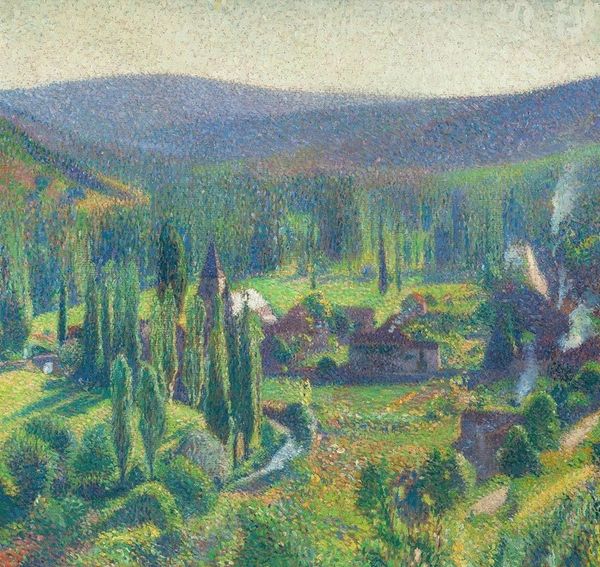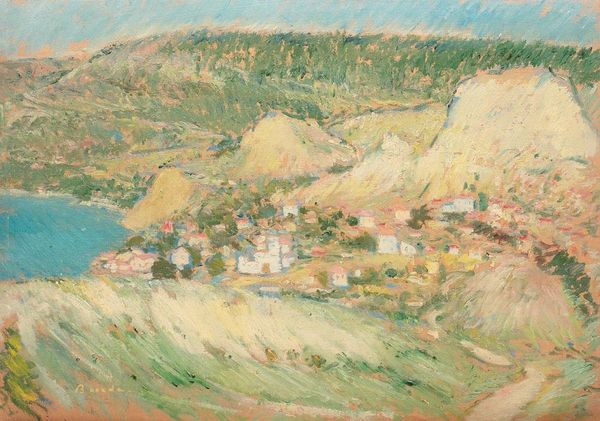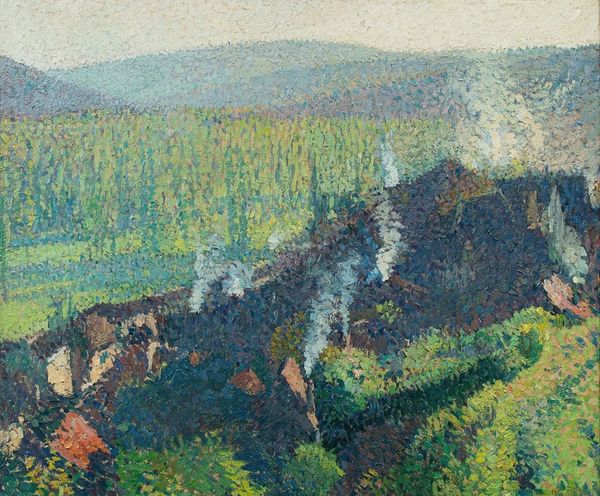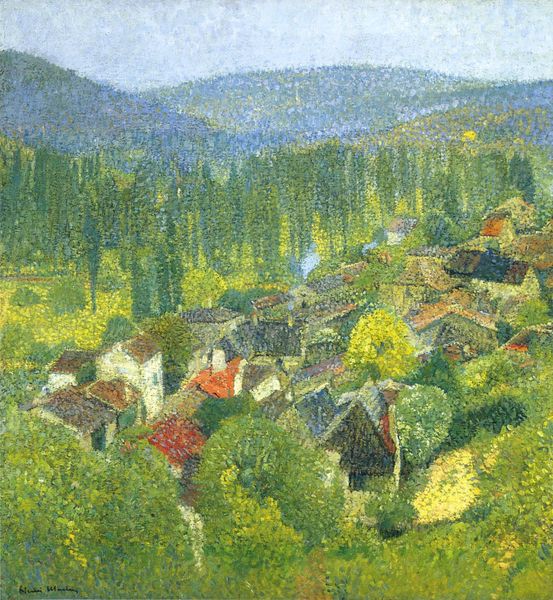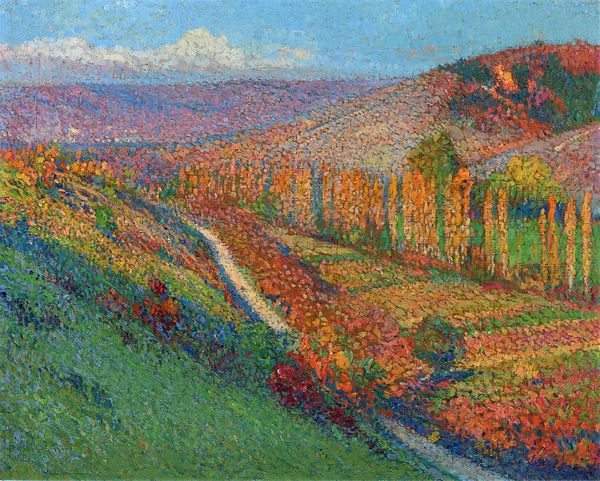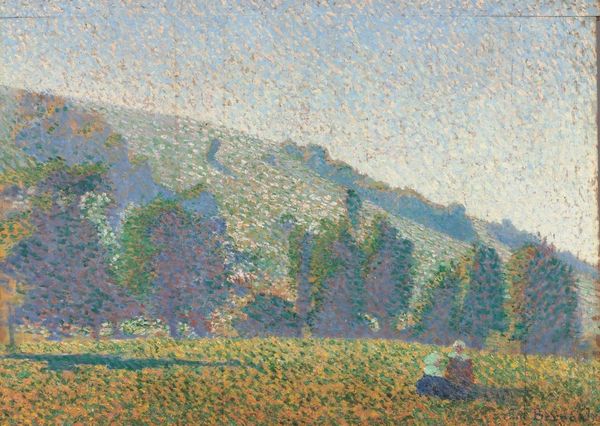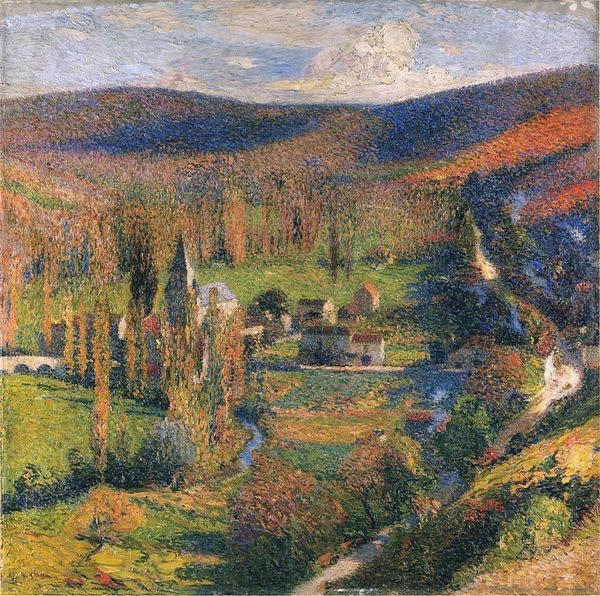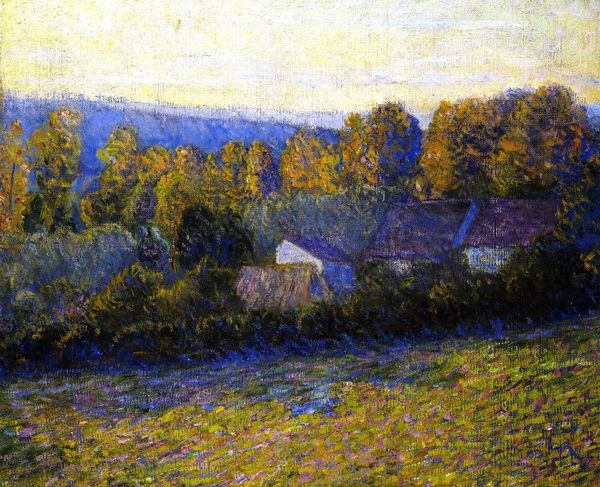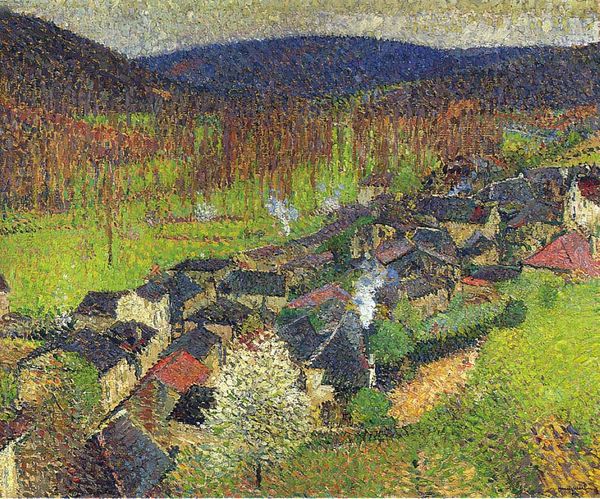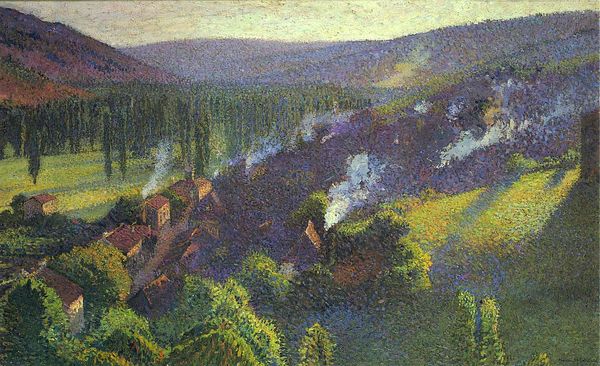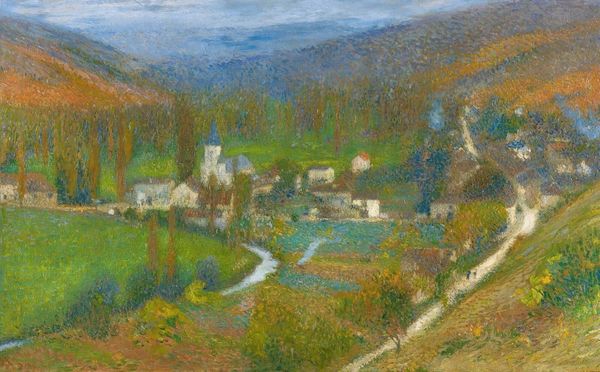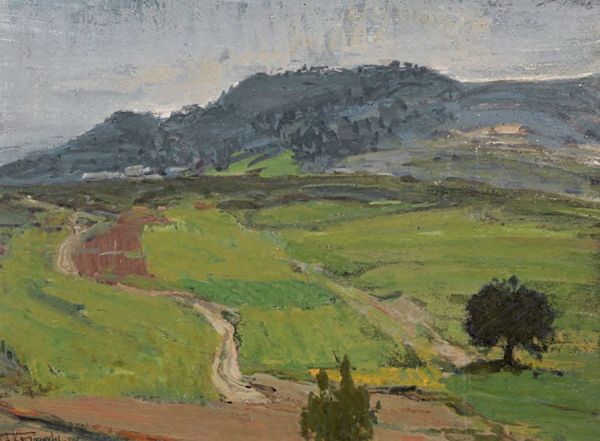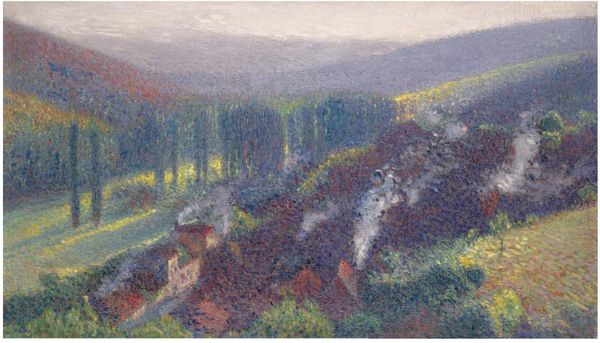
Copyright: Public Domain: Artvee
Editor: Here we have Henri Martin’s "Vue de Labastide-du-Vert," likely painted sometime in the 1920s. It's an oil painting done in a post-impressionistic style. What strikes me most is the almost dreamlike quality. All the distinct brushstrokes kind of soften the edges of the landscape. How do you interpret this work? Curator: What I see here is not just a landscape, but a constructed memory of place. Martin uses the Neo-Impressionist technique, those dots of color, almost like individual memory fragments. Notice how the village nestled within the landscape becomes one with it; a symbiotic relationship isn’t it? The village and nature supporting each other in unison. It echoes an enduring bond between humanity and nature, one deeply ingrained in our collective consciousness. Does it spark something in you, regarding a connection to nature? Editor: I see that connection you're talking about, for sure. It feels idyllic and permanent. Curator: And the permanence comes through the style. Pointillism, though scientifically driven, becomes here a means to evoke timelessness. Consider how light functions in our memories. Seldom stark, usually filtered, dreamlike… as you initially observed. This stylistic choice elevates a simple vista to an almost archetypal scene; the village becomes every village and nature the nurturing mother. Editor: That’s a very interesting point. It transforms the landscape from the particular to the universal, creating an ideal. Curator: Exactly. And how interesting it is, that the method to achieve that – Pointillism – comes from detailed, optical and scientific observation. Editor: That makes me see the painting in a completely different light! Curator: Indeed. Sometimes what seems like a stylistic choice, in the end reveals our deeply shared symbolic language.
Comments
No comments
Be the first to comment and join the conversation on the ultimate creative platform.
